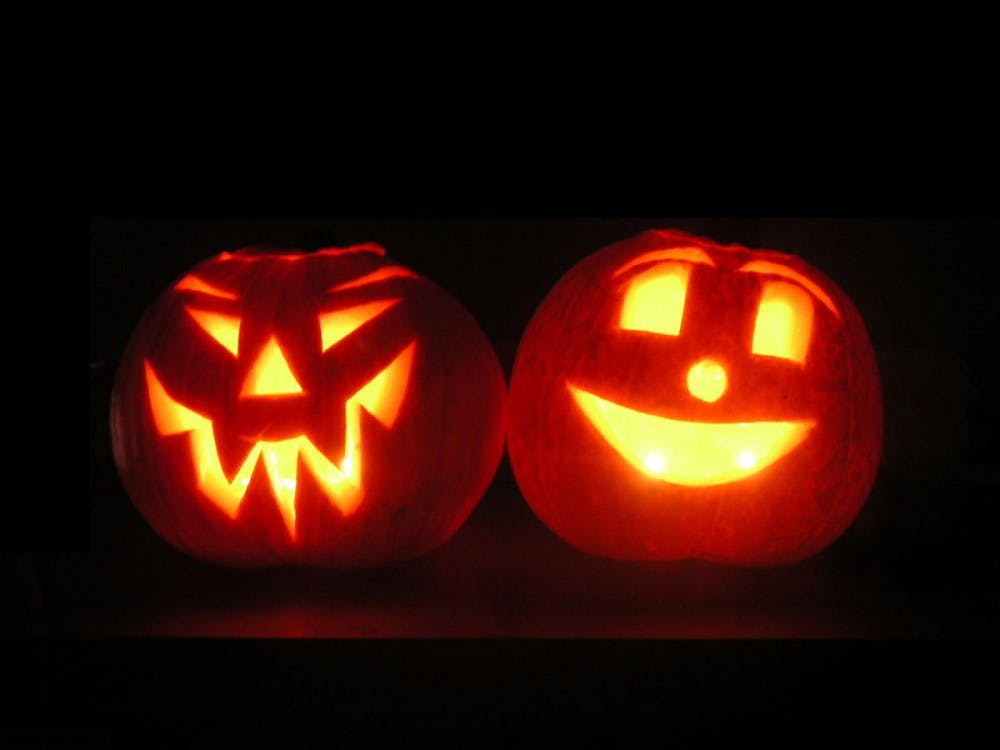Whispering voices, shrieking violins and unrelenting synth beats.
These are all elements of an eerie movie score, which is key for horror films to pack a punch and immerse the audience in fear.
Three of the most famous horror movies of the 20th century, “Psycho” (1960), “Halloween” (1978) and “An American Werewolf in London” (1981) are beloved in part because of their iconic use of music. Modern horror films like “It Follows” (2014), “The Witch” (2015), and “It” (2017) are re-examining the purpose of film scores to create new and terrifying cinematic experiences.
‘Psycho’
Alfred Hitchcock’s “Psycho” has one of the most iconic twists in cinema history, but the infamous shower scene has to be the most ubiquitous. The scene is silent, save for the trickling of water until the killer first pulls back the shower curtain to attack the movie’s heroine, Marion Crane (Janet Leigh). The scratching of the violins tears through the audience’s complacency as bitingly as the knife cuts into Marion. A sharp “SKREE” accompanies every stab. Then, the pitch of Bernard Herrmann’s score sinks as Marion slides down the wall and becomes another corpse in the Bates’ house of horrors.
“Psycho,” often hailed as the first slasher flick, whet the moviegoing public’s appetite for violence. While the ear-splitting violins suited the sudden death of Marion Crane, the stalker-horror films of the 1970s required something more haunting.
‘Halloween’
“Halloween” is another horror movie with a score so haunting it has nearly transcended the original film. John Carpenter’s 1978 horror classic introduced the world to the deranged killer Michael Myers and the unsettling piano theme that accompanies him. While the “Halloween Theme,” composed and performed by Carpenter himself, is just repetitive piano notes and dramatic synth, they combine to create a chilling and unrelenting experience, much like Michael Myers.
The 1970s produced an excess of horror movies with their own cliches and conventions. In order to break the formula directors had to get creative. Director John Landis, fresh off of making “Blues Brothers,” used darkly humorous song choices rather than a purposefully unsettling score to create a new horror experience.
‘An American Werewolf in London’
The music of John Landis’s “An American Werewolf in London” embodies a tongue-in-cheek self awareness. As film about a man contracting lycanthropy on the moors of England, it begins with Bobby Vinton’s soulful rendition of the song “Blue Moon” over shots of the English countryside. Creedence Clearwater Revival’s “Bad Moon Rising” plays as the protagonist, David, nears his first full moon. “Blue Moon,” this time sung by Sam Cooke, plays again during the David’s first brutal transformation into the werewolf. The juxtaposition between the upbeat doo-wop hits and jaunty country rock and the film’s gore gives it a dark sense of humor.
Contemporary horror films, however, have lost their way when it comes to properly using audio to help build the tone. Most of the time, the crashes and sound effects these movies employ for jumpscares can be copied and pasted into the horror movie of the week without much else changing.
However, there have been a few films in recent years with original scores and soundtracks that elevated the horror experience beyond what the viewing public has come to accept.
‘It Follows’
The 2014 film “It Follows” uses its darkly foreboding music to enhance the film’s overall sense of dread. The ‘80s-influenced score, composed by Rich Vreeland, or Disasterpeace, builds and crashes with the tension of the film. Even as the protagonist, Jay, attempts to avoid and rid herself of her pursuer, the echoing, synth score makes the audience aware that she will never truly be safe. The score’s dark discordance keeps the audience looking over their shoulder the same as Jay.
The homage to 1980s synth is popular right now as the genre makes a comeback, but it isn’t the only way to create that unsettling dissonance. The same effect can be achieved with unearthly voices and drawn out notes on string instruments, as shown in 2015’s “The VVitch: A New England Folktale.”
‘The VVitch: A New England Folktale’
For the horror film, director Robert Eggers had one rule for composer Mark Korven: no electronic instruments. Eggers wanted a score that would both sound authentic to the colonial time period that the movie is set in as well as transport the audience back to a world where not only were witches real, they were also a looming threat. What Korven created was mournful accompaniment that could at any time ramp up to a cacophonous, disorienting combination of voices and percussion. The score ranges from somber to sinister to match the tragedy that befalls the family at the center of the film.
As a historical horror film dedicated to capturing the 1630s accurately, “The VVitch” made remarkable use of acoustic instruments. Other films set in more contemporary times, like the recent remake of “It,” have a little more flexibility in choosing music to establish the setting.
‘It’ (2017)
The nostalgia felt for the 1980s, however, reigns supreme. That much is obvious from Netflix’s “Stranger Things” and 2017’s remake of Stephen King’s horror classic “It.” Unlike the book or the original 1990 miniseries, 2017’s “It” sets the kids’ childhood in the 1980s rather than 1950s. This decade change comes with the obligatory ‘80s soundtrack, which includes music by New Kids on the Block and The Cure. While the film’s soundtrack may be more geared toward fan service than setting a tone, it helps establish the setting and bring levity to a film about a killer clown.
While it is unreasonable to expect every horror movie to incorporate music as iconic as Psycho or Halloween, horror is an imaginative, risk-taking genre. The scores and soundtracks should reflect that. The music alone can be enough to set the audience’s teeth on edge. The best movie monsters would not be scaring people years later if it was not for the music that got them there.





